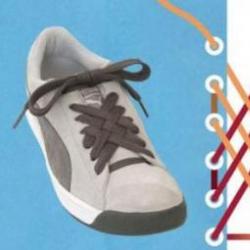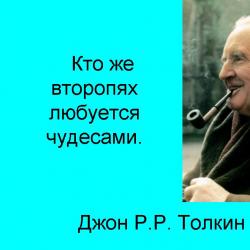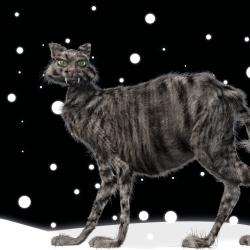How to crochet a picot correctly. Options. Crochet picot: patterns and step-by-step instructions for beginners How to crochet a picot from 3 air loops
Crocheted picot (or, as it is also called, pique) is the simplest, but at the same time, beautiful pattern for tying products. You can tie a picot on any knitted items, incl. knitting needles, as well as napkins, tablecloths, towels and even shoes. Things with such binding look original and beautiful. How to crochet a picot pattern yourself using a crochet hook? This loop is not at all difficult to knit. Beginning craftswomen will easily learn how to perform this element if they carefully study our master class with diagrams.



Attention to the video lesson:
Tutorial on how to crochet picot using patterns
Pico is a chain knitted from several air loops and closed in a circle. There are several ways in which it is knitted.
The classic version is knitted above the main row of the product.

In order to knit the classic version, you need to insert the hook at the beginning of the fabric, cast on 3 chain stitches, return the hook to the loop where you started knitting the air loops and knit. The photo below shows the diagram.

A video tutorial will help you thoroughly understand this technique.
A simple Trefoil pattern in the finished product

Insert the hook into the place where the picot will be, cast on 3 ch. and close them into a ring with a connecting post. Next, knit another 3 ch. and crochet into the first v. p., that is, at the beginning of the second leaf of the trefoil. Knit the third sheet in the same way. Connect all the leaves by knitting a connecting stitch in the loop of the main row of fabric. The diagram of this pattern is shown in the photo below.

Video tutorial:
"Coins" to decorate the created version

Knit 5 ch, remove the hook from the loop, place it in the first ch. from five loops, grab the left loop and knit. The diagram of a rounded picot is shown in the photo.

Flat picot and triangular for every taste

This type of binding is performed when you need to create a wavy edge on the product. Cast on 5 ch, make 1 yarn over, knit from the first ch. double crochet and secure with a picot stitch through 3 loops from the beginning of the cast-on.

Dial 5 ch. Along this chain, starting from the second loop from the hook, knit st. b/n., 1 half-st., art. s/n, art. s/2n. It turns out to be a triangle. Secure this element to the fabric with a connecting loop through 3 loops from the beginning of the chain.
Tying a neckline using this technique is quick and easy
In any knitted product you need to process the neck. The point of binding is to secure, seal and decorate the edge of the product. Crocheting the neckline using Pico (diagrams below) is the best option. In the following photos you will see products with a picot-shaped neck, as well as strapping patterns.


These neck options are made with a classic picot binding made of 3 ch. The description of knitting this pattern is outlined in this article above.
In the next photo you see a knitted collar, the neck of which is also decorated using this technique.

In this case, a loop is knitted on every third stitch. To make it more clear to knitters how the neck is knitted, we provide knitting patterns for the entire collar.


We create a product with lace trim in a master class
Delicate and light lace is obtained by knitting it using the technique described above. In the following photos you can see the options for lace trims and knitting patterns.

Lace in 4 interesting options
Cast on a chain of v.p. 1 row. Art. b\n. in each v.p. chains.
2nd row. 3 v.p. rise, 2 ch, 1 tbsp. s/n. after 2 tbsp. b/n. prev row, 2 vp, 1 tbsp. s/n. after 2 tbsp. b/n. prev row. Knit like this until the end of the row.
3rd row. * 8 tbsp. b/n., 10 v.p., return to the beginning of the row, secure a chain of 10 v.p. with a blind loop. tie (3 tbsp., picot from 3 vp., repeat 3 times), 2 tbsp. b/n., pico from 3 v.p., 2 tbsp. b/n.* Repeat from * to *.
Lace No. 2.2nd row. 3 v.p. rise, 2 ch, 1 tbsp. s/n. after 2 tbsp. b/n. prev row, 2 vp, 1 tbsp. s/n., after 2 tbsp. b/n. prev row. Knit like this until the end of the row.
3rd row. * 9 tbsp. b/n., 5 v.p., art. s/n. after 2 tbsp. b/n. prev row, 5 vp, art. s/n., from one point, 5 vp, fasten with a blind loop a chain of 5 vp, each arch of 5 vp. tie (3 tbsp. b/n., picot from 3 vp., 3 tbsp. b/n., repeat 3 times), 2 tbsp. b/n., pico from 3 v.p., 2 tbsp. b/n. * Repeat until the end of the row.
Lace No. 3.
Cast on a chain of v.p. 1 row. 1 tbsp. b/n. in each v.p. chains.
2nd row. 3 v.p. rise, 5 vp, 1 tbsp. s/n., after 5 tbsp. b/n. prev row. Knit like this until the end of the row.
3rd row. All st. b/n.
4 row. * Art. b/n., 1 v.p. rise, st. b/n., 1 v.p., 2 tbsp. s/n., 1 v.p., 2 tbsp. b/n., 1 v.p., 2 tbsp. s/n.,
1 vp, 1 tbsp. b/n., 1 v.p., 2 tbsp. s/n., 1 v.p., 1 tbsp. b/n., 12 v.p., fasten with a blind loop behind the v.p. prev row, tie (3 tbsp., picot from 3 vp., repeat 4 times), tbsp. b/n., 1 v.p.,
2 tbsp. s/n. * Repeat until the end of the row.
Lace No. 4.
Cast on a chain of v.p. 1 row. 1 tbsp. b/n. in each v.p. chains.
2nd row. 3 v.p. rise, 2 ch, 1 tbsp. s/n., after 2 tbsp. b/n. prev row, 2 vp, 1 tbsp. s/n., after 2 tbsp. b/n. prev row. Knit like this until the end of the row.
in the 80-90s, knitting in our country became mega popular - after all, for some it was not just a pleasant hobby, but also an urgent necessity, and sometimes a good way to earn extra money. In those years, in order to acquire a high-quality exclusive item, you most often had to sew or knit something with your own hands. Video tutorials had not yet been created, so patterns and their explanations were used for knitting.
Pico is the lightest and most beautiful pattern that can be used to tie various things, such as carpets, napkins, towels and even boots. Products whose edges are tied with picot look quite original. To crochet picot, you need to study all the patterns.
There are options for knitting picots with knitting needles; to learn how to do this, check out the master class below.
To make this pattern you need knit a chain of three chain stitches and connect them with a special column.
Next, consider knitting the pattern with columns and single crochet. According to our pattern, you need to knit 3 sb/n. Then make a chain of 3 ch.
The next step is to insert the hook into the sc/n from which we started these loops. Then we pass it through the loop of the top of the column and the wall on the side. We grab the thread and knit the loops that lie on the hook.
This is our little picot element. If you understand the first stages of work, you can understand that crocheting is very interesting. You can knit our pattern in the same way. on chains of ch and over ss/n. Picot is knitted in different ways. And all methods decorate the product in their own way.
Shamrock
Let's look at another unique way to crochet picot. The knitting pattern is in many ways similar to the pattern that was in the first knitting option, but there are still differences. This is a triple picot, which knitters also call a trefoil.
Description of work:
First, we knit the first part of the part, then again we create a chain of air loops and connect it into a ring. You need to make three rings and then you will get a shamrock. Next, we knit our single crochets again. So we figured out how to make a shamrock! This pattern is perfect for decorating your openwork tablecloth or knitted blouse.
Coin
This method differs from previous ones in its volume and method for tying warm products. It can be done either by knitting or crocheting. Making such a pattern is quite simple. Let's look at how to crochet a picot using this method.
 Description of work:
Description of work:
First we knit three special loops, then move on to the double crochet stitch. Now you need to knit such a stitch again, and again in the first loop. Next, we knit three loops of the chain and fasten the finished part using a special post into the loop of the previous row, from which the knitting of the chain began.
After these steps, you should end up with an interesting little circle that looks like a coin. That's all, now you know how to make a pattern called “Coin”.
Other ways to crochet picot
If you want to get an edge that looks like a wavy line, then there is an excellent option for you - a flat picot.
Knitting a flat picot from 5 loops is not difficult; there is no need to use single crochets here.
Description of work:
We cast on five loops and create a double crochet in the original air loop. Then we fasten the finished picot using a connecting post, skip three posts in the previous row and repeat the report the required number of times.
If you need to make the edge of a product with sharp corners, then you need to learn how to make a picot in the form of a triangle.
Description of work:
We cast on five loops and, skipping the last one, knit into each of them in order: in 4 - a single crochet, in a new one in order - a half-column. Next - a double crochet, in 1 - a double crochet. As a result, you will end up with a small triangle. Secure it to the edge of the product using a special post for joining, skipping 3 loops in the previous row. Now you know how to knit pique using different methods, if you continue to develop and learn, you will begin to create real masterpieces.
How to knit booties for children
Before creating booties, you need to find out the size of the child’s feet by month. To knit shoe booties using knitting needles, you need to take the following things:

Description of work:
First, take thin knitting needles, find out the size and choose a color. Let's start knitting from the sole. Let's cast on 40 chain stitches, which will then make two rows of garter stitch. Now on the next 4 beds we add more loops from the main side (one from two edges and two in the middle). As a result, we should have 56 air loops. We knit the new 4 rows with threads of a different color. The knitting of the sole is completed. We knit the booties themselves a little differently, We do all the work according to the following scheme:
- The first row is one forward, the other back.
- Second row - knit the front loop the same way, then yarn over, and remove the new loop from the knitting needle without knitting.
- Third row - before the yarn over, we repeat the steps and remove it from the loop again, and knit the loop itself with the front one.
- The last row - we knit the front side on the wrong side, and the yarn over itself - on the wrong side.
And most importantly, learn how to tie a bootie correctly!
Conclusion
I hope that after this article, you will no longer wonder how to crochet a picot. Everything is incredibly simple and beautiful! Good luck in your endeavors!
How to crochet a picot pattern






Pico (or pique) is the simplest, but at the same time very beautiful pattern, which is used to tie various products, for example, tablecloths, napkins, towels and, not usually, shoes. Products whose edges are tied with picots look very beautiful and original. The patterns for crocheting this element are given below. If you are interested in video lessons, then scroll to the end of the article.



And here is picot in patterns:


But there are options for picot and knitting.
To learn how to crochet a picot, you can check out the master class below.
Crochet picot: step-by-step tutorial for beginners
To perform a picot, you need to knit a chain of 3 air loops (ch) and connect it first with a connecting stitch (ss).
Let's take a closer look at knitting picots with single crochets (sb/n).

According to this pattern you need to knit 3 s/n.

Then knit a chain of 3 ch.

Insert the hook into the sc from which these loops were started, passing it through the loop of the top of the post and the side wall.


Grab the thread.

And knit the loops that are on the hook.

The result is a picot element. As you can see, crochet picot is not at all difficult.
Repeat from start to finish the required number of times, this is what you get:

In the same way, you can knit picot on chains of ch and over s/n.
The picot or pique pattern has a large number of knitting options. All of them very well decorate the product tied with them, which looks much more interesting with such lining. And the product, knitted with pique, looks very unusual and elegant.
Beautiful samples
Below are pique crochet patterns.

The following pique patterns can be used not only for tying, but also, just like in the first sample, used in the pattern itself.







If knitting according to patterns and descriptions is difficult for you, then you can use video lessons in which everything is shown clearly.
Video selection to help beginners
Classic option:
Trefoil:
Reduced size:
Red and white strapping option:
Style "On columns":
Volumetric technique:
Pico
Tambour work very often ends with small teeth called pico. They are: dense, made of air loops and lace.
Dense picots, in turn, are divided into small, large, sharp and round-leafed picots.
Small round picots.
They are made both on the knitting itself and separately from it.
Separately, they are knitted like this: 3 air loops; turn the work over and, catching it in the 2nd and 1st loops, knit 1 stitch each without a cape.
On the tambour row, this picot is performed like this: 1 stitch without a cape, * 3 chain stitches, go back and knit 2 stitches from them without a cape; leave 1 loop and knit 1 stitch without a cape, catching it in the next loop. Start from *.
Large round picots.
Cast on 5 chain stitches, skip 3 loops from them and knit 1 stitch on the 2nd loop and 1 stitch on the 1st loop, then repeat from the beginning.
In the case when you need to decorate some tambour work with these picots, you knit it like this: knit 5 chain stitches, skip 3 of them and knit 2 stitches on the last two; then leave 2 loops at the bottom of the work and knit 1 stitch without a cape into the 3rd stitch. Repeat knitting.
Spicy picots.
Throw on 6 chain loops; then skip the 6th loop and knit on five chain stitches: 1 tight loop, 1 single stitch, 1 half stitch, 1 simple stitch and, finally,
1 double column. Then repeat from the beginning.
Pico with small leaves.
Knitting is performed as follows: * 4 air loops; 3 simple stitches in the first loop; 1 tight loop in the same loop in which 3 stitches are connected**; 2 or 3 chain stitches and repeat from * to **.
If these picots form the edge of chain knitting, then instead of air loops that form the gap, knit
2 tight loops in two loops of the previous row.
Pico with large leaves.
Performed on six air loops. In the first of them, knit 3 double stitches (the loops of the stitches remain on the hook). Thread the thread onto the hook and thread it through the 4 loops. Cast on 5 chain stitches. Knit 1 tight loop into the loop in which the stitches are connected. Repeat from the beginning.
Picot from air loops.
For small picots from air loops you need to knit: 5 air loops; 1 tight loop in the first of five chain loops.
For large picots made of air loops: 5 air loops; 1 column in the first of them.
Postal pico.
5 chain stitches, connect 1 post stitch into a circle and connect with the 5th chain stitch.
Round picot down.
This picot is made using five air loops. Remove the hook from the loop and grab it into the 1st of the five air loops. Then take the remaining loop and thread it through the loop on your hook.

Lace picots.
In order to make a lace picot from air loops, you need to knit 2 air loops and thread the hook through the first air loop. Throw on a thread, thread it, and lower the picot from the hook. Knit 2 chain stitches again. Thread the hook through the 1st chain loop again, throw on the thread, thread it, and lower the picot from the hook again. Repeat all steps from the beginning.

Lace picot with columns without cape: 1 column without cape; 1 air loop; Pull the loop to picot size and remove the hook.
The loop can be put on a stick or a thick knitting needle (for convenience), hooked into the horizontal thread of the last loop, yarn over, thread it through this loop; 1 stitch without cape, caught in the next loop; then all over again.

Picot with a border of columns.
Take 7 chain stitches. Then follow: 1 tight loop in the 4th air loop; 1 triple stitch in the 1st of seven chain stitches; * 1 pique of 4 chain stitches; 1 triple stitch into the 2nd stitch of the first triple stitch and repeat from *. 
Crocheted picot (or, as it is also called, pique) is the simplest, but at the same time, beautiful pattern for tying products. You can tie a picot on any knitted items, incl. knitting needles, as well as napkins, tablecloths, towels and even shoes. Things with such binding look original and beautiful. How to crochet a picot pattern yourself using a crochet hook? This loop is not at all difficult to knit. Beginning craftswomen will easily learn how to perform this element if they carefully study our master class with diagrams.



Attention to the video lesson:
Tutorial on how to crochet picot using patterns
Pico is a chain knitted from several air loops and closed in a circle. There are several ways in which it is knitted.
The classic version is knitted above the main row of the product.

In order to knit the classic version, you need to insert the hook at the beginning of the fabric, cast on 3 chain stitches, return the hook to the loop where you started knitting the air loops and knit. The photo below shows the diagram.

A video tutorial will help you thoroughly understand this technique.
A simple Trefoil pattern in the finished product

Insert the hook into the place where the picot will be, cast on 3 ch. and close them into a ring with a connecting post. Next, knit another 3 ch. and crochet into the first v. p., that is, at the beginning of the second leaf of the trefoil. Knit the third sheet in the same way. Connect all the leaves by knitting a connecting stitch in the loop of the main row of fabric. The diagram of this pattern is shown in the photo below.

Video tutorial:
"Coins" to decorate the created version

Knit 5 ch, remove the hook from the loop, place it in the first ch. from five loops, grab the left loop and knit. The diagram of a rounded picot is shown in the photo.

Flat picot and triangular for every taste

This type of binding is performed when you need to create a wavy edge on the product. Cast on 5 ch, make 1 yarn over, knit from the first ch. double crochet and secure with a picot stitch through 3 loops from the beginning of the cast-on.

Dial 5 ch. Along this chain, starting from the second loop from the hook, knit st. b/n., 1 half-st., art. s/n, art. s/2n. It turns out to be a triangle. Secure this element to the fabric with a connecting loop through 3 loops from the beginning of the chain.
Tying a neckline using this technique is quick and easy
In any knitted product you need to process the neck. The point of binding is to secure, seal and decorate the edge of the product. Crocheting the neckline using Pico (diagrams below) is the best option. In the following photos you will see products with a picot-shaped neck, as well as strapping patterns.


These neck options are made with a classic picot binding made of 3 ch. The description of knitting this pattern is outlined in this article above.
In the next photo you see a knitted collar, the neck of which is also decorated using this technique.

In this case, a loop is knitted on every third stitch. To make it more clear to knitters how the neck is knitted, we provide knitting patterns for the entire collar.


We create a product with lace trim in a master class
Delicate and light lace is obtained by knitting it using the technique described above. In the following photos you can see the options for lace trims and knitting patterns.

Lace in 4 interesting options
Cast on a chain of v.p. 1 row. Art. b\n. in each v.p. chains.
2nd row. 3 v.p. rise, 2 ch, 1 tbsp. s/n. after 2 tbsp. b/n. prev row, 2 vp, 1 tbsp. s/n. after 2 tbsp. b/n. prev row. Knit like this until the end of the row.
3rd row. * 8 tbsp. b/n., 10 v.p., return to the beginning of the row, secure a chain of 10 v.p. with a blind loop. tie (3 tbsp., picot from 3 vp., repeat 3 times), 2 tbsp. b/n., pico from 3 v.p., 2 tbsp. b/n.* Repeat from * to *.
Lace No. 2.2nd row. 3 v.p. rise, 2 ch, 1 tbsp. s/n. after 2 tbsp. b/n. prev row, 2 vp, 1 tbsp. s/n., after 2 tbsp. b/n. prev row. Knit like this until the end of the row.
3rd row. * 9 tbsp. b/n., 5 v.p., art. s/n. after 2 tbsp. b/n. prev row, 5 vp, art. s/n., from one point, 5 vp, fasten with a blind loop a chain of 5 vp, each arch of 5 vp. tie (3 tbsp. b/n., picot from 3 vp., 3 tbsp. b/n., repeat 3 times), 2 tbsp. b/n., pico from 3 v.p., 2 tbsp. b/n. * Repeat until the end of the row.
Lace No. 3.
Cast on a chain of v.p. 1 row. 1 tbsp. b/n. in each v.p. chains.
2nd row. 3 v.p. rise, 5 vp, 1 tbsp. s/n., after 5 tbsp. b/n. prev row. Knit like this until the end of the row.
3rd row. All st. b/n.
4 row. * Art. b/n., 1 v.p. rise, st. b/n., 1 v.p., 2 tbsp. s/n., 1 v.p., 2 tbsp. b/n., 1 v.p., 2 tbsp. s/n.,
1 vp, 1 tbsp. b/n., 1 v.p., 2 tbsp. s/n., 1 v.p., 1 tbsp. b/n., 12 v.p., fasten with a blind loop behind the v.p. prev row, tie (3 tbsp., picot from 3 vp., repeat 4 times), tbsp. b/n., 1 v.p.,
2 tbsp. s/n. * Repeat until the end of the row.
Lace No. 4.
Cast on a chain of v.p. 1 row. 1 tbsp. b/n. in each v.p. chains.
2nd row. 3 v.p. rise, 2 ch, 1 tbsp. s/n., after 2 tbsp. b/n. prev row, 2 vp, 1 tbsp. s/n., after 2 tbsp. b/n. prev row. Knit like this until the end of the row.






